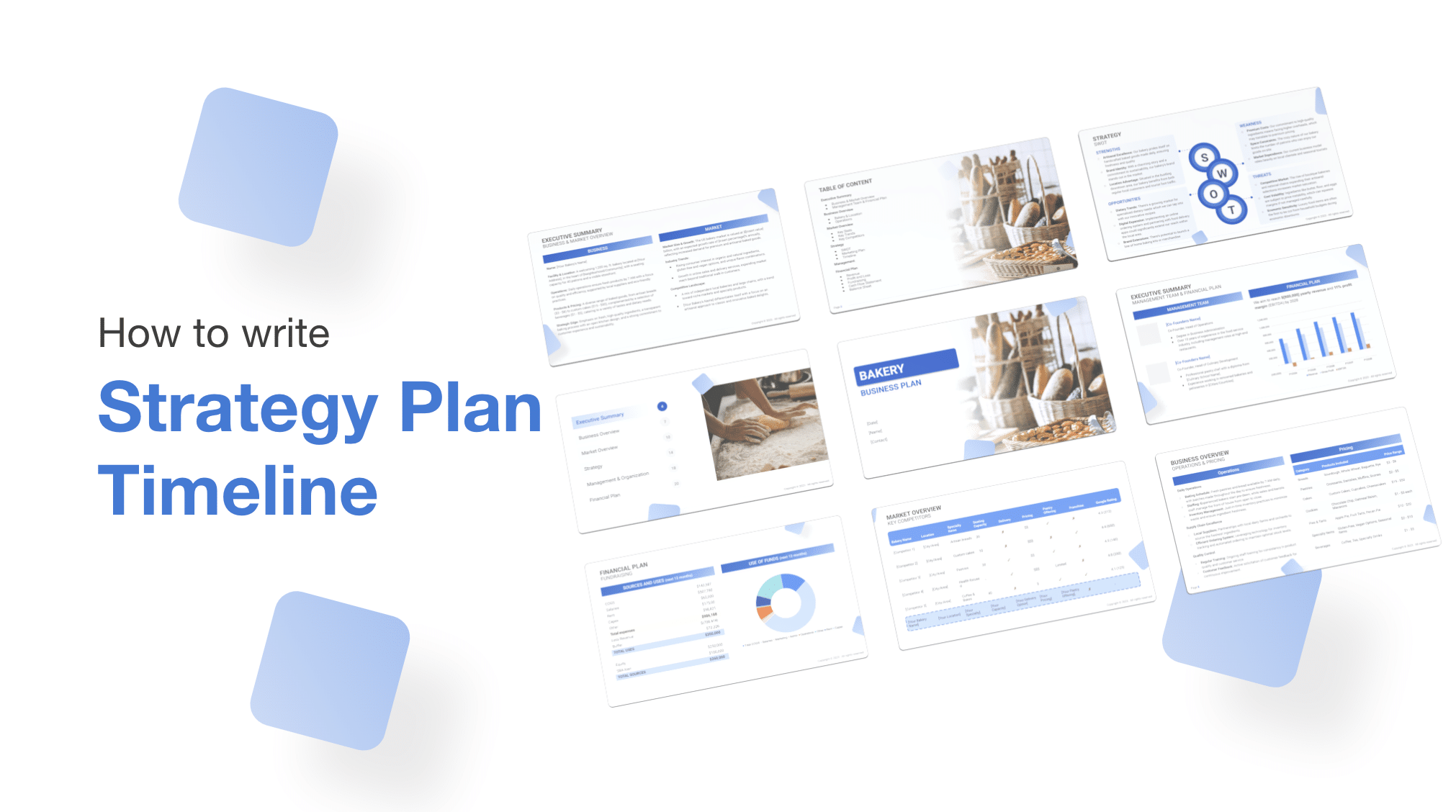How to Write the Strategy Plan Timeline (+ Examples)

Creating a strategic plan timeline is crucial, especially if you are preparing a business plan for your business. This comprehensive guide simplifies the process, offering a step-by-step guide to crafting a clear, actionable strategy plan timeline tailored for business owners.
Whether you’re launching a new startup or scaling an existing business, you’ll find essential tips to best map out your business’s milestones and objectives. Let’s dive in!
What is a strategy plan timeline?
A strategy plan timeline in a business plan is a comprehensive schedule that outlines the sequence of actions, key milestones, and deadlines required to achieve the business’s strategic objectives.
It serves as a roadmap, detailing how the business will transition from its current state to its desired future state over a specified period.
This timeline is crucial for ensuring that strategic goals are met within realistic timeframes, allowing for efficient resource allocation and enabling stakeholders to monitor progress.
The strategy plan timeline can include some or all of the elements below:
- Objectives: The specific, measurable goals the business aims to achieve, aligned with its overall vision and mission.
- Milestones: Significant achievements or checkpoints that indicate progress toward the objectives. These are often quantifiable and serve as interim targets.
- Actions: The steps or initiatives that need to be undertaken to reach each milestone and, ultimately, achieve the objectives. These are typically assigned to specific teams or individuals.
- Deadlines: The timeframes by which milestones and objectives should be met to keep the plan on track. Deadlines help prioritize tasks and ensure timely progress.
- Resources: An outline of the financial, human, and material resources allocated to each action or milestone, ensuring that the plan is realistic and feasible.
- Review Points: Scheduled assessments of the plan’s progress, allowing for adjustments based on performance, external changes, or unforeseen challenges.
Incorporating a strategy plan timeline into a business plan provides a clear path for growth, operational improvements, or other strategic shifts.
It is essential for aligning team efforts, managing stakeholder expectations, and securing investment, as it demonstrates a thoughtful, actionable approach to achieving business success.
How to create a strategy plan timeline: 6 steps
When crafting a strategy plan timeline for a business plan, the goal is to map out a clear, structured path that will guide the business from its current state to achieving its long-term objectives.
This involves setting specific, measurable goals, identifying key milestones, and allocating resources effectively. Here’s a simplified approach to creating a strategy plan timeline that can be tailored to fit the unique needs of different businesses:
1. Define Your Objectives
Start by clearly defining the long-term goals and objectives of your business. What do you want to achieve in the next three to five years? Objectives should be specific, measurable, attainable, relevant, and time-bound (SMART).
2. Conduct a SWOT Analysis
Perform a SWOT analysis to identify your business’s Strengths, Weaknesses, Opportunities, and Threats. This will help you understand the internal and external factors that could impact your ability to achieve your objectives.
3. Set Short-term Goals
Break down your long-term objectives into smaller, actionable short-term goals. These should act as stepping stones toward your larger objectives and be achievable within a year.
4. Identify Key Actions and Milestones
For each short-term goal, list out the key actions or steps needed to achieve it. Then, identify significant milestones within these actions, which will serve as markers of progress.
5. Allocate Resources
Determine what resources (financial, human, technological) are needed to accomplish each action and milestone. Allocate these resources accordingly, ensuring that constraints are considered and managed.
6. Establish a Timeline
Assign realistic timeframes to each action and milestone. Your timeline should reflect the urgency and priority of each goal, balancing ambition with feasibility.
Strategy plan timeline: 2 examples
Here are 2 examples you can use as an inspiration to create yours. These are taken from our coffee shop business plan and hair salon business plan templates.
Coffee Shop Example

Hair Salon Example




